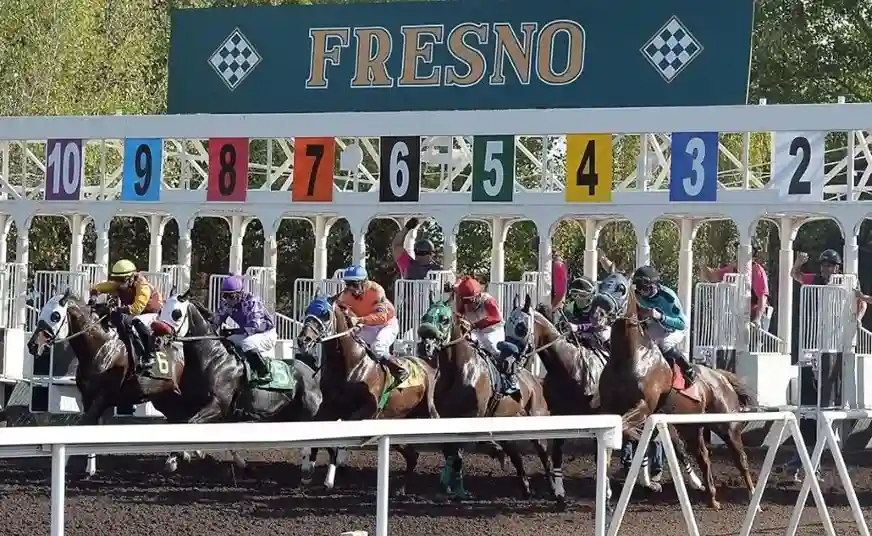Big Fresno Fair Returns Without Live Racing Tradition

Elle
Oct 4th 2025
Likes
Share:
For the first time in more than seven decades, visitors at the Big Fresno Fair will notice a significant change because it came back without the Live racing Tradition. Horse racing, long regarded as one of the central features of the annual event, will not take place this year. Instead, a series of new attractions has been organized to fill the gap and give fairgoers a different experience.
The change follows an announcement in February from the California Authority of Racing Agriculture Fairs, which stated that it would no longer manage live racing at Fresno or other Northern Fresno California fairs. The agency listed the main factors that influenced its decision as money problems and the increased fear for the animals’ welfare. In the absence of a live race operator, the Fresno Fair tried to continue on its own by submitting a request for short-term self-managed races to the California Horse Racing Board in Fresno. In a June decision, the board turned down that application, so the agriculture fair is now left without the aid of one of its most famous customs.
Horse live racing has deep roots at the Big Fresno Fair. When the fair first opened in 1883, Valley farmers often competed against one another by entering their horses in informal races. These contests quickly became a highlight of the fair, which at the time was primarily an agricultural gathering. Within a few years, the demand from spectators led to the construction of a permanent grandstand. The races gradually developed into a professional meet, drawing large audiences each fall.
The tradition was minimally interrupted during the early 20th century, and the races have been going on at the fairgrounds since then without any major interruptions. It was in 1938 that the present grandstand, which today bears the name Brian I. Tatarian Grandstand, was constructed. The 4,000-seat, reinforced concrete edifice is a symbolic sign of the long marriage between Fresno and the sport. Up to this year, the events of racing have been going on without any significant breaks; thus, the occurrence of large crowds of tens of thousands of fans every year.
The absence of the track program this year has led organizers to reshape the entertainment schedule. Instead of horse live racing, the grandstand will now feature events such as arena cross, a motocross competition held on a dirt track built inside the grounds. During the day, a monster truck demo will be available for the audience to watch the crazy stunts and high-powered action, and to have fun with it.
An event with cars will take place as well, and the center of attention will be antique automobiles; therefore, the local lovers of cars will have the opportunity to exhibit their vehicles.
Besides this, the rodeo will continue for two days and will feature bull riding, barrel live racing, and various contests connected to the ranching traditions of the region, which will take place.
Although these events differ greatly from horse live racing, organizers believe they provide the scale of entertainment visitors expect from Fresno’s largest annual gathering. The challenge will be in maintaining attendance and revenue without the strong draw of the races. For decades, the betting and spectator base around live racing provided both financial support and a sense of continuity. With that removed, the fair must demonstrate that its new offerings can generate equal interest.
The broader outlook for Live racing in Fresno California, also adds to the uncertainty. Throughout the state, the sport of greyhound live racing has suffered a steady decline due to concerns about the safety of the dogs, shrinking pools of bets, and increasing the cost of operations. Several tracks have ceased their operations completely, and the rest have experienced a decrease in the number of races that they can hold. The elimination of the Fresno meet is a consequence of the same factors that have transformed the sector in different regions of the state.
Nevertheless, the Big Fresno Fair remains one of the top community events in the Central Valley area. Besides the grandstand calendar, the fair is also the next big thing with an agricultural fair, livestock competitions, concerts, carnival rides, and food vendors. These signs have increased the popularity of the event, which has thus developed beyond traditional racing, and people from all over the region have become the guests of the event.
This year was a major change in the fair’s story. The updated schedule will definitely bring a different kind of excitement, which is why some people will be happy while others will be sad that they won’t hear the horses running. It is still not clear if horse live racing will be back in the upcoming years, as it depends on the regulatory decisions and the organizers’ capability of finding a sustainable model. The signature event of Fresno is still going on, but with a different face, a tribute to the past while still dealing with the present situation.
